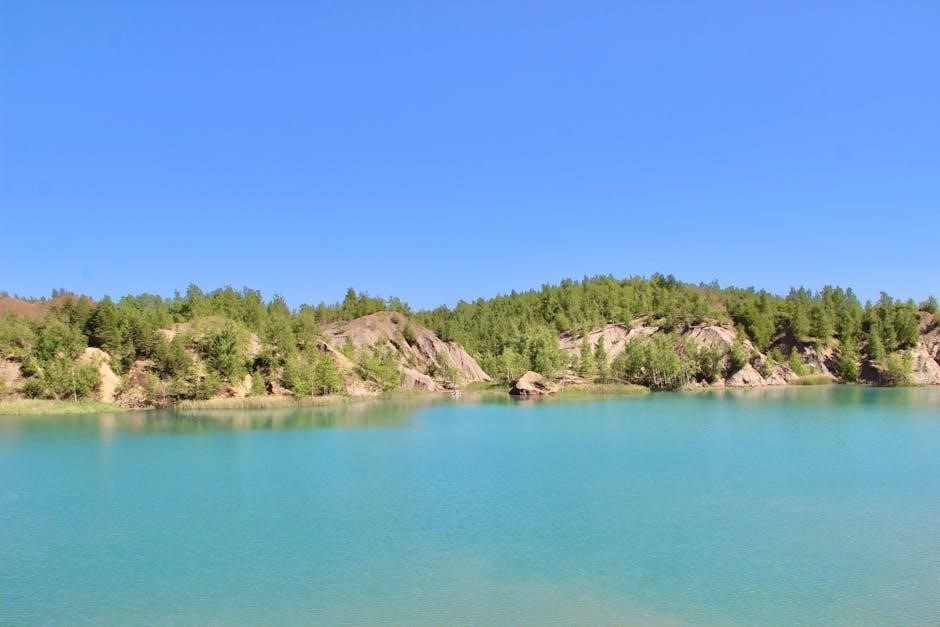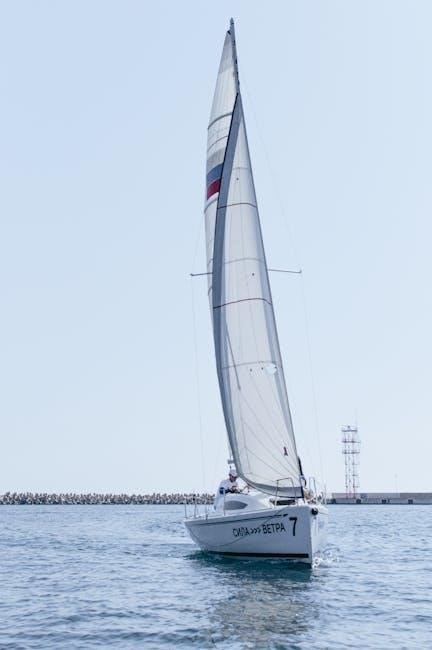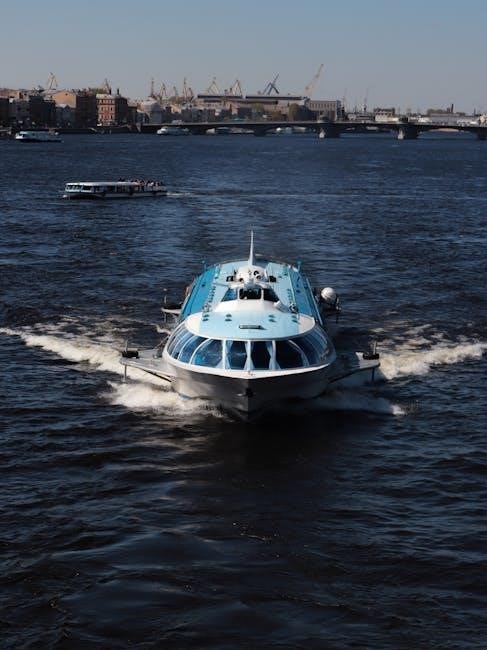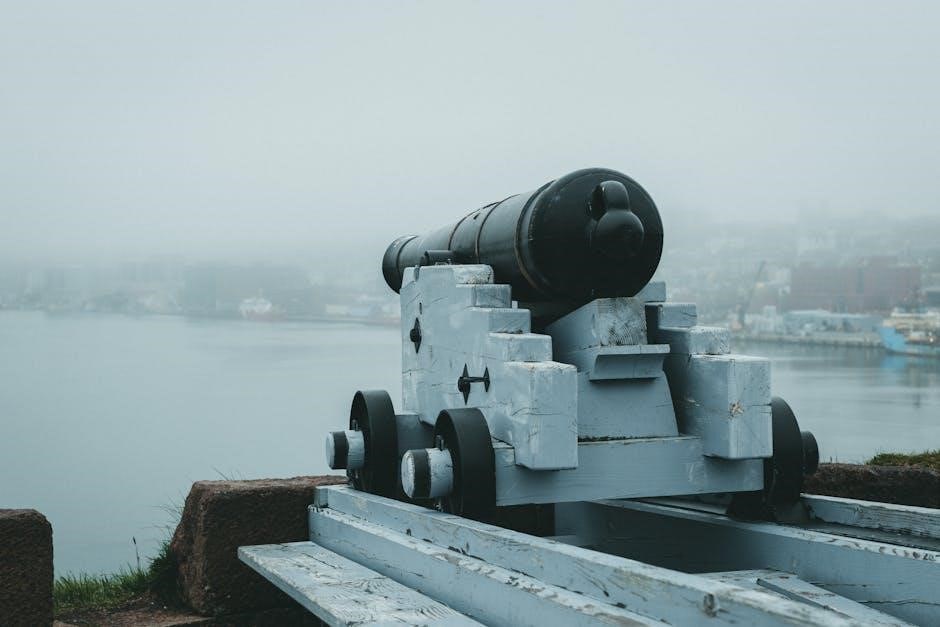The sea plays a pivotal role in Russian strategy‚ reflecting both geopolitical ambitions and economic interests. Key documents like the Maritime Doctrine and Arctic Policy highlight Russia’s focus on naval power and maritime dominance.
Importance of the Sea in Russian Strategy
The sea holds immense significance in Russian strategy‚ serving as a cornerstone for both economic and military power. It provides access to global trade routes‚ enabling Russia to project influence and secure resources. The Black Sea and Arctic regions are particularly vital‚ offering strategic advantages for naval operations and access to lucrative energy reserves. Russia’s ability to control key waterways ensures economic stability and strengthens its geopolitical stance. The sea also plays a critical role in countering external threats‚ with naval capabilities acting as a deterrent against adversaries. Furthermore‚ maritime dominance supports Russia’s ambitions in contested regions‚ such as Ukraine‚ where control of coastal areas impacts both military and economic outcomes. In essence‚ the sea is a multifaceted tool in Russian strategy‚ integrating economic‚ military‚ and geopolitical objectives to safeguard national interests and enhance global influence.

Key Documents and Policies
Russia’s maritime ambitions are outlined in the Maritime Doctrine‚ the Fundamentals of State Policy in Naval Operations‚ and the Arctic Policy 2035‚ guiding its naval and economic strategies for global influence.
The Maritime Doctrine of the Russian Federation
The Maritime Doctrine of the Russian Federation‚ approved in 2015 and revised in 2022‚ outlines Russia’s strategic objectives for maritime power and influence. It emphasizes the importance of the World Ocean‚ Arctic regions‚ and the Black Sea in achieving national security and economic goals. The doctrine prioritizes the development of the Northern Sea Route (NSR) as a competitive trade corridor and underscores the need for advanced naval capabilities to protect Russian interests. It also highlights the role of maritime infrastructure‚ including ports and shipbuilding‚ in sustaining economic growth. The doctrine serves as a roadmap for asserting Russia’s presence in global maritime affairs‚ ensuring access to strategic resources‚ and countering external threats. By focusing on both military and economic dimensions‚ the doctrine reflects Russia’s ambition to emerge as a dominant maritime power in the 21st century.
Fundamentals of the State Policy in Naval Operations to 2030
The Fundamentals of the State Policy in Naval Operations to 2030 provide a comprehensive framework for Russia’s naval strategy over the next decade. This document‚ released in 2017‚ builds on the Maritime Doctrine‚ focusing on modernizing the navy and enhancing its operational capabilities. It emphasizes the need to strengthen Russia’s presence in key regions‚ including the Arctic‚ Black Sea‚ and Pacific. The policy underscores the importance of developing advanced technologies‚ such as nuclear-powered submarines and hypersonic missiles‚ to maintain naval superiority. Additionally‚ it highlights the role of the Northern Sea Route (NSR) in fostering economic growth and ensuring strategic access to global markets. By prioritizing both offensive and defensive capabilities‚ the policy aims to safeguard Russia’s maritime interests and counter potential threats from adversaries. This strategic roadmap ensures that the Russian Navy remains a formidable force‚ capable of projecting power and securing national objectives through 2030.
Arctic Policy 2035
Arctic Policy 2035 outlines Russia’s strategic vision for the Arctic region‚ emphasizing its growing importance in global geopolitics. The document identifies the Arctic as a critical area for economic development‚ energy exploration‚ and national security. It highlights the Northern Sea Route (NSR) as a vital transportation corridor‚ aiming to establish it as a competitive global trade route. Russia plans to expand its infrastructure‚ including ports and icebreakers‚ to facilitate navigation and resource extraction. Environmental protection is also a key focus‚ with measures to mitigate the impact of climate change and industrial activities. The policy underscores the need to strengthen military presence in the Arctic to safeguard territorial integrity and resources. By 2035‚ Russia aims to be a leading Arctic power‚ leveraging the region’s potential to enhance its global influence and economic stability. This comprehensive strategy reflects Moscow’s commitment to asserting its dominance in the rapidly changing Arctic landscape.

The Black Sea in Russian Strategy
The Black Sea is central to Russia’s strategic ambitions‚ enabling control of maritime routes and access to key resources. It plays a critical role in the Russia-Ukraine conflict and regional dominance.
Role in the Russia-Ukraine Conflict
The Black Sea has become a critical theater in the Russia-Ukraine conflict‚ with both nations vying for control of maritime routes and access to strategic ports. Russia’s seizure of Snake Island early in the conflict aimed to restrict Ukraine’s naval movements and block access to key ports like Odesa‚ crippling Ukraine’s grain exports. Ukraine‚ however‚ has demonstrated resilience‚ reclaiming Snake Island and employing advanced weaponry‚ such as drones and missiles‚ to target Russian naval assets‚ including the sinking of the flagship Moskva. The Black Sea Fleet remains central to Russia’s strategy‚ enabling amphibious assaults and supporting ground forces. Meanwhile‚ Ukraine’s efforts to disrupt Russian naval dominance underscore the sea’s importance in shaping the conflict’s outcome. The blockade of Ukrainian ports has also had global repercussions‚ exacerbating food insecurity and highlighting the Black Sea’s role as a chokepoint for international trade. This maritime dimension continues to influence both military and economic dynamics in the region.
Countering NATO Influence
Russia’s maritime strategy in the Black Sea is deeply intertwined with its broader aim of countering NATO’s expanding influence. By asserting control over strategic waterways and coastal regions‚ Russia seeks to limit NATO’s naval presence and operational capabilities. The deployment of advanced missile systems and coastal defenses in Crimea has enhanced Russia’s ability to project power and deter potential NATO interventions. Additionally‚ Moscow has leveraged its dominance in the Black Sea to disrupt NATO’s logistical and military operations‚ particularly through targeted exercises and patrols. This strategy not only strengthens Russia’s regional security but also complicates NATO’s efforts to support Ukraine and maintain stability in the area. By creating a robust maritime defense perimeter‚ Russia aims to offset NATO’s military advantages and safeguard its geopolitical interests in the Black Sea region. This approach reflects Russia’s overarching goal of maintaining a strategic balance against NATO in Europe.
Challenges and Future Prospects
Russia faces challenges like sanctions impacting its shipbuilding industry and NATO’s growing Black Sea presence. However‚ climate change offers opportunities‚ such as the Northern Sea Route‚ to enhance maritime trade and influence.

Challenges Facing Russian Maritime Strategy

Russia’s maritime strategy faces significant challenges‚ including economic sanctions impacting its shipbuilding industry and limiting access to advanced technologies. The ongoing conflict with Ukraine has strained resources‚ particularly in the Black Sea‚ where naval dominance is contested. Additionally‚ climate change poses environmental risks to coastal infrastructure and Arctic operations. Russia must also contend with NATO’s increased presence in the Black Sea and the Baltic regions‚ heightening geopolitical tensions. Maintaining a robust naval fleet and ensuring the security of maritime trade routes remain critical yet costly endeavors. Furthermore‚ international sanctions have disrupted Russia’s ability to modernize its fleet‚ potentially hindering its long-term maritime ambitions. These challenges underscore the complexity of sustaining a competitive maritime strategy amidst external pressures and internal resource constraints.
Future Outlook and Opportunities
Russia’s future maritime strategy may leverage emerging opportunities‚ particularly in the Arctic‚ where climate change opens new trade routes like the Northern Sea Route. This could enhance Russia’s global trade influence and strengthen its position as a key Arctic player. Additionally‚ advancements in naval technology‚ such as autonomous systems and drones‚ could modernize its fleet and improve operational efficiency. Strategic partnerships with other nations‚ especially in the Indo-Pacific‚ might also diversify Russia’s maritime influence beyond traditional regions. However‚ realizing these opportunities requires overcoming sanctions‚ technological gaps‚ and geopolitical competition. Overall‚ while challenges persist‚ Russia’s maritime future holds potential for growth and innovation‚ provided it can navigate the complex global landscape effectively.
